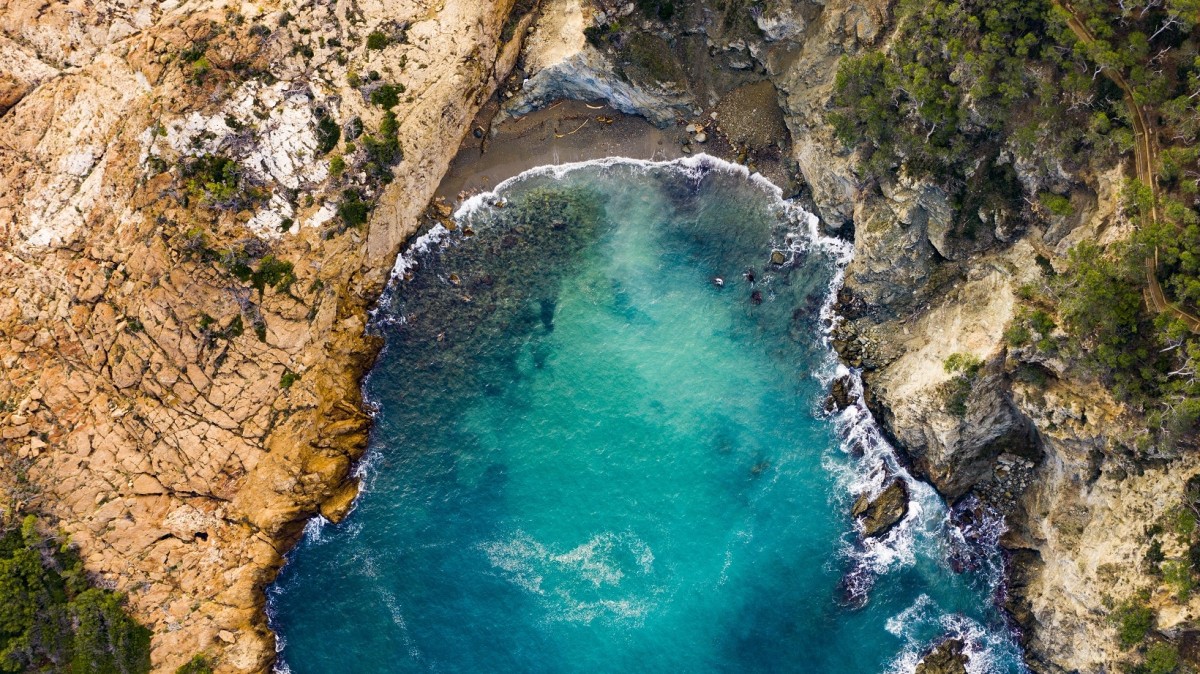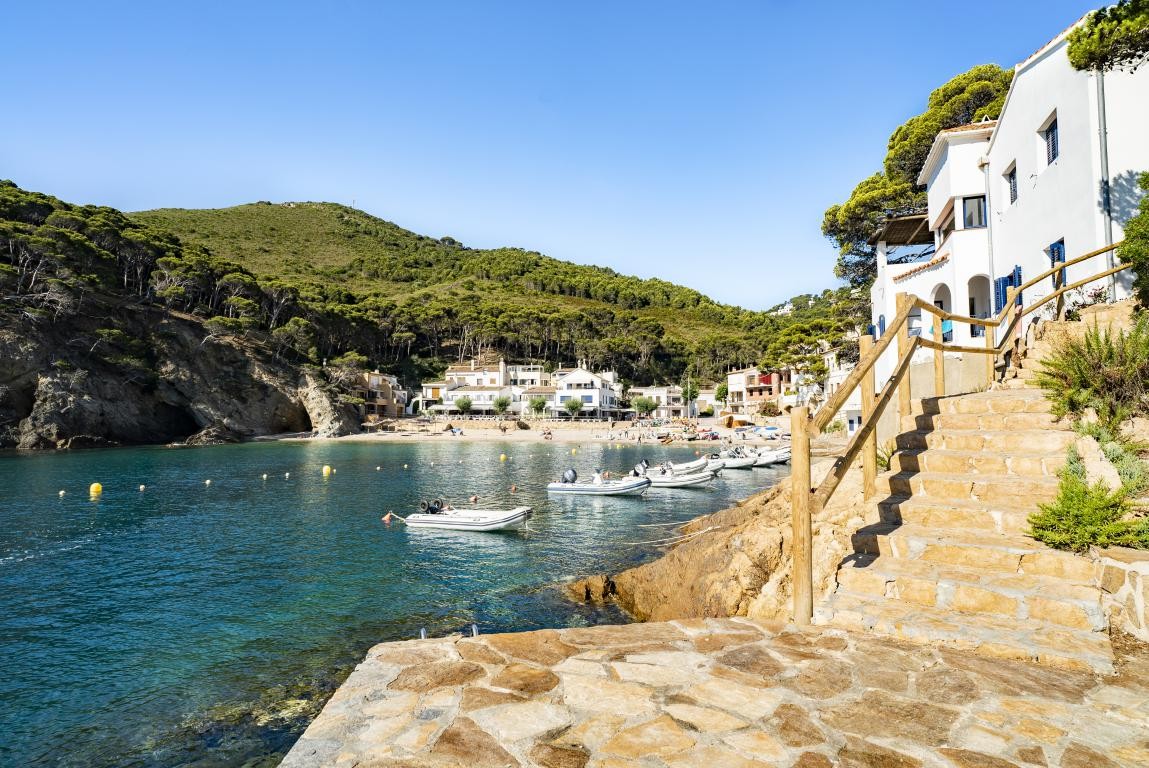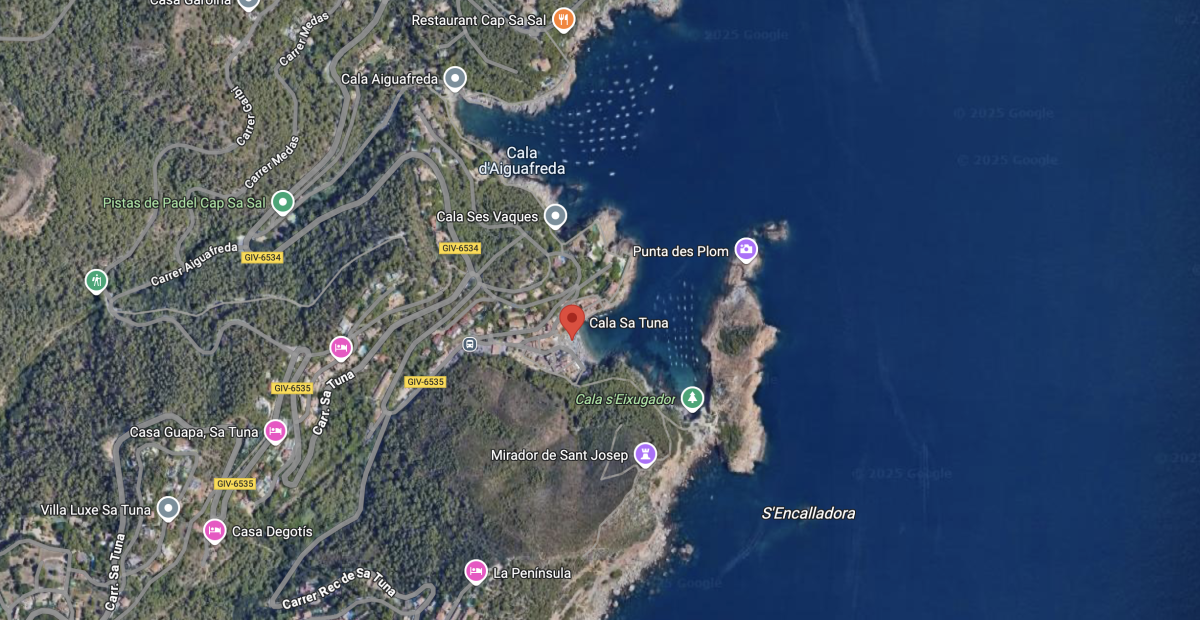
Just 90 minutes from Barcelona, nestled among the cliffs and pine forests of the Costa Brava, lies Cala Sa Tuna, the cove that’s captured the attention of National Geographic. Described by the publication as “the Costa Brava cove embraced by colourful seaside houses,” it remains a peaceful retreat steeped in fishing tradition and unspoilt natural beauty, charmingly untouched by time or mass tourism.
With its crystal-clear waters, serene atmosphere and privileged setting, it offers a tranquil alternative to the busier beaches along the Catalan coast. Curious to see why this hidden gem enchants all who visit? Read on.
A natural spot to unwind in the heart of the Costa Brava
Sa Tuna is a small cove nestled among lush vegetation and sheltered by rocky surroundings, preserving its quaint fishermen’s cottages and the charm of a lightly populated area where traditions remain strong. If you’re seeking a tranquil spot near the city that has resisted urban sprawl, this is the place to visit.
The beach itself is tucked away in a sheltered bay, with a somewhat winding access road. It is small, just 80 metres long and 25 metres wide, but offers all essential amenities: showers, sun lounger and umbrella hire, disabled access, a promenade and parking. While popular, Sa Tuna has retained its authentic, traditional appeal.
The hidden gem where sea meets cliffs and forest
Cala Sa Tuna lies around 5 km from Begur’s centre, a Girona municipality famed for its rugged coastline. The area boasts rocky cliffs, dense forests, crystal-clear waters and a rich underwater ecosystem.
Find accommodation in Begur and visit Cala Sa Tuna.
If you visit Begur and its surroundings, there are several nearby spots not to be missed: Platja del Racó, Platja Sa Riera, Cala Illa Roja and Cala Aiguafreda, among others.
However, Sa Tuna is one of the most renowned and charming coves on the coast, partly because it retains the quaint atmosphere of a traditional fishing village.
While the beach and shoreline are pebbly, be sure to explore the calm, sheltered waters, rich in marine life, thanks to the protective rocky surroundings.

Secret coves, pine tree trails and Mediterranean flavours
Among the highlights is a short swim or snorkel to Cala S'Eixugador, a small, unspoiled beach where vibrant marine life still thrives beneath the surface.
Cala Sa Tuna also boasts a small cove on its right side, accessible via the S'Eixugador coastal path. This wild, tranquil spot, framed by pine trees, rocky outcrops and charming cottages, is quintessential Costa Brava.
Hiking is another popular activity here, with routes like Camí Vell de Sa Tuna and Camí de Ronda Est offering stunning views.
And of course, don’t miss the local cuisine; several restaurants nearby provide the perfect place to refuel and soak up the atmosphere.
How to get to Cala Sa Tuna?
Cala Sa Tuna is accessible by car, with parking available nearby. You can also reach it by public transport or via land and sea excursions. The road leading to the cove is winding and surrounded by dense vegetation.

From Begur, Cala Sa Tuna is just a 10-minute drive along the GIV-6535 road. If you’re coming from Barcelona, expect around a 90-minute journey via the AP-7 motorway.